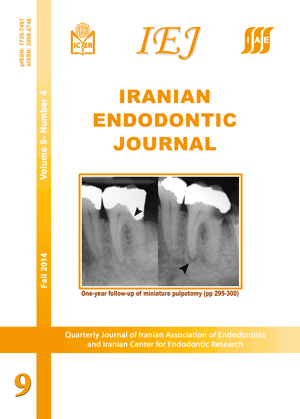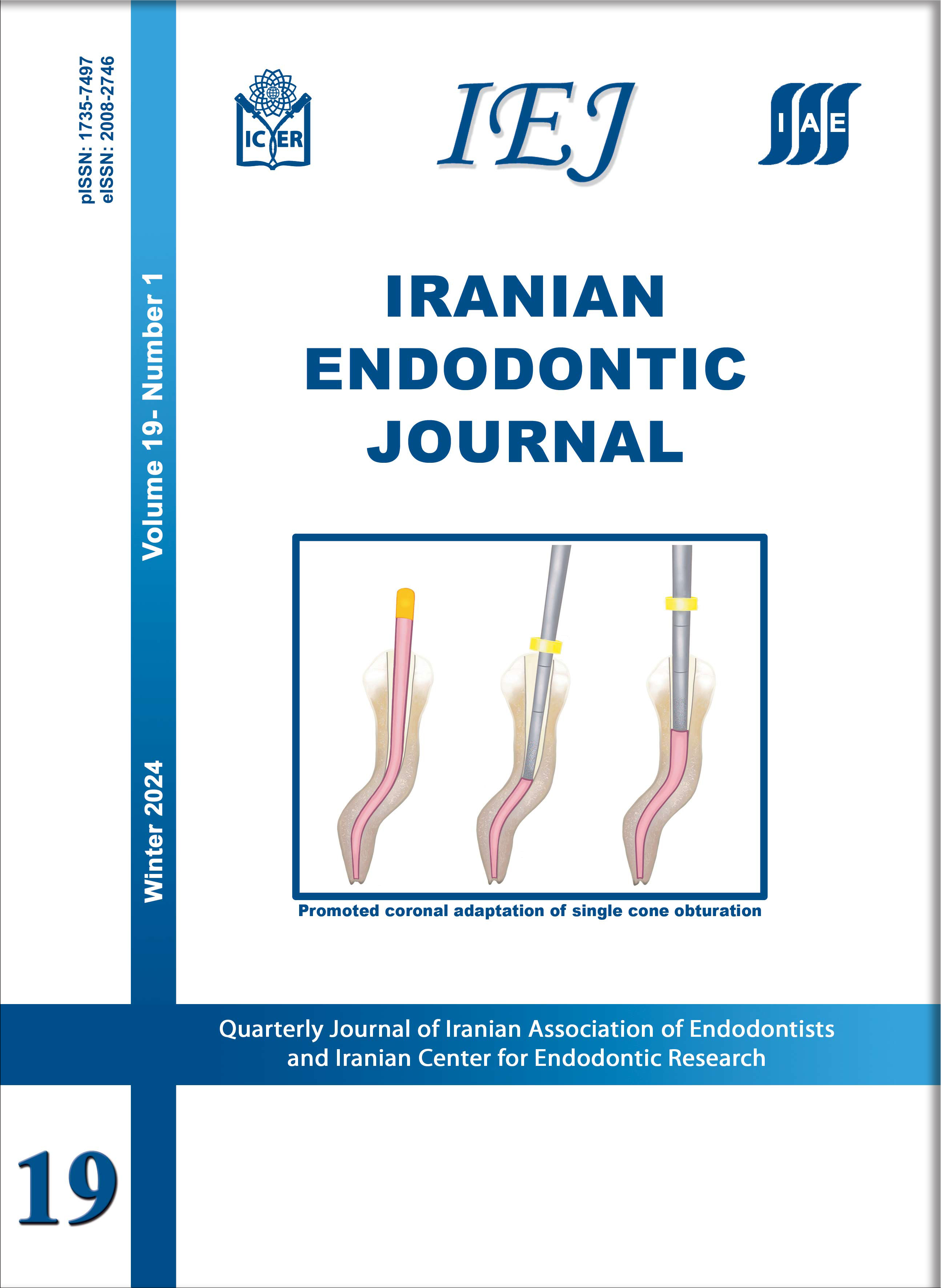Accuracy of Conventional and Digital Radiography in Detecting External Root Resorption
Iranian Endodontic Journal,
Vol. 9 No. 4 (2014),
1 October 2014,
Page 241-245
https://doi.org/10.22037/iej.v9i4.5055
Introduction: External root resorption (ERR) is associated with physiological and pathological dissolution of mineralized tissues by clastic cells and radiography is one of the most important methods in its diagnosis. The aim of this experimental study was to evaluate the accuracy of conventional intraoral radiography (CR) in comparison with digital radiographic techniques, i.e. charge-coupled device (CCD) and photo-stimulable phosphor (PSP) sensors, in detection of ERR. Methods and Materials: This study was performed on 80 extracted human mandibular premolars. After taking separate initial periapical radiographs with CR technique, CCD and PSP sensors, the artificial defects resembling ERR with variable sizes were created in apical half of the mesial, distal and buccal surfaces of the teeth. Ten teeth were used as control samples without any resorption. The radiographs were then repeated with 2 different exposure times and the images were observed by 3 observers. Data were analyzed using SPSS version 17 and chi-squared and Cohen’s Kappa tests with 95% confidence interval (CI=95%). Result: The CCD had the highest percentage of correct assessment compared to the CR and PSP sensors, although the difference was not significant (P=0.39). It was shown that the higher dosage of radiation increases the accuracy of diagnosis; however, it was only significant for CCD sensor (P=0.02). Also, the accuracy of diagnosis increased with the increase in the size of lesion (P=0.001). Conclusion: Statistically significant difference was not observed for accurate detection of ERR by conventional and digital radiographic techniques.




